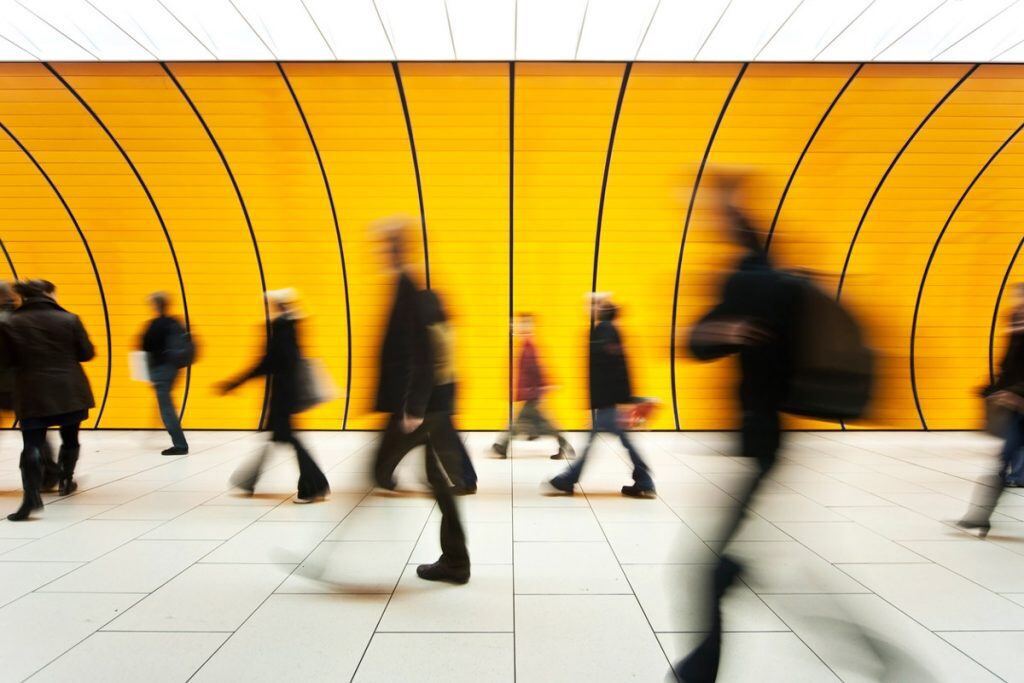You can travel to a glamorous far-off destination and take pictures of world-famous monuments that have been snapped billions of times. But what you really want to document is how it felt to be in this place.
Photos that convey the way a place actually feels are very special. The good news is that you can get started with these types of pictures in any place you happen to find yourself by discovering the remarkable in the everyday world.
Use these tips to help you capture the extraordinary, and arrange those special photos to tell your story in a Motif photo book or calendar.
Outdoor photography
Primarily, we're talking about outdoor photos here in getting a sense of place. You might tend to frame up a tightly focused shot that's zoomed in on a person, object, or situation that charmed you—make a conscious choice to use your wide-angle settings and see what you perceive differently, and experiment with different subjects for a variety of angles.
Maybe you notice a single pedestrian in rush-hour traffic, and you can capture the expression on her face as she looks up, willing the street light to change. Maybe a fruit vendor is laying out his wares in his kiosk, and you can frame all the colorful fruits and even the motion of his hands in your shot. Or perhaps you can find an elevated perch over a busy town square, and use a wide shot to see hundreds of people hurrying in every possible direction.
Look for motion, and adjust your own angle to let the subjects of your photographs carry on with their day, ideally without being aware of your presence. Cropping and editing after you get the shot can enhance your focus on the subject and their surroundings.
Street photography
The most interesting street photographs really focus on the minutiae of daily life, picking up details of the background and subject that mark the time and place. A group of teenage girls sitting at a sidewalk cafcafé, staring past your camera at the traffic, convey a mood. Adjusting your angle might also pick up the advertisements on the building wall behind them, or even the condition and texture of the wall itself. An elderly man with a spring in his step and a lively hat may catch your eye, and your wide lens may make him the focus against a crowd of commuters rushing off a bus.
Look at contrasts of light and dark, motion and stillness, as well as colors, light, and shadow. Most importantly, think about what’s real, not simply what’s pretty. Find the beauty in everyday life. You’ll discover that framing your subject with a good proportion of their surroundings, no matter how gritty or everyday, enhances the sense of their true charm and personality.
Rain is your friend
It’s a truism for a reason: When the rain comes down, photographers head outside. Rain offers endless possibilities to see a streetscape or location in a new way. Umbrellas make frames for pictures of people passing by. Reflections off wet pavement make streetlights, lanterns, holiday decorations, or even a changing traffic light suddenly magical.
Increase your shutter speed to capture the detail of a puddle splashing under a child’s foot. Look at or through the raindrops themselves, even snapping a street or the view of a new city through a rain-soaked window. The ways that people, cars, and animals move in the rain are different and distinct, and with a little attention you can make a truly unique photographic memory.
Candid and courteous
When photographing people, be courteous and considerate. You may be out enjoying the rain and the angles and the hustle of the crowd, but it’s still your responsibility to fade into the background, out of the way of that crowd!
Time your foray into the crosswalk for that low-angle view of oncoming traffic, for a moment when the traffic won’t need to brake for you. Shoot quickly when you’re walking—use a wide-angle shot, your burst speed, and take pictures from the hip for high-energy snaps that compensate for not having time to focus.
You can always fine-tune an image in Motif when you’re ready. If you’re focusing on a crowd, be a fly on the wall and stay invisible to the group. If you’re focusing on an individual, consider asking for permission first. Or try for a shot that tells a story about that person’s mood, movement, and energy without focusing on their face.
Street photography often documents the realistic moments of a person in a space. Whether moving a horse and wagon or juggling a cellphone teleconference, every worker has a story whose rhythm makes up the whole symphony of a location’s vibe. Focus on rapidly getting a sense of that vibe in your picture, without altering the rhythm by interrupting a person’s work. A healthy respect for the working life that caught your eye is paramount.
Tell the story
When you’ve developed a collection of images, think about arranging them to tell the whole story of a trip or of your experience in a place. A Motif photo book of your own design can show:
- Sunrise to sunset as the town wakes up and winds down
- The changing weather (those beautiful raindrops!)
- A theme of dogs, working people, streetscapes, stores, or schoolchildren
- Out-of-the way corners: a hidden gate, an odd bit of sculpture, a pocket garden, a window decoration
Above all, look for the everyday details that, as surely as your sense of smell and hearing, tell you where you are. The light, the motion, and the interplay of people in the streets going about their days, will show you the magic of any location and the story of the places you’ve visited.













